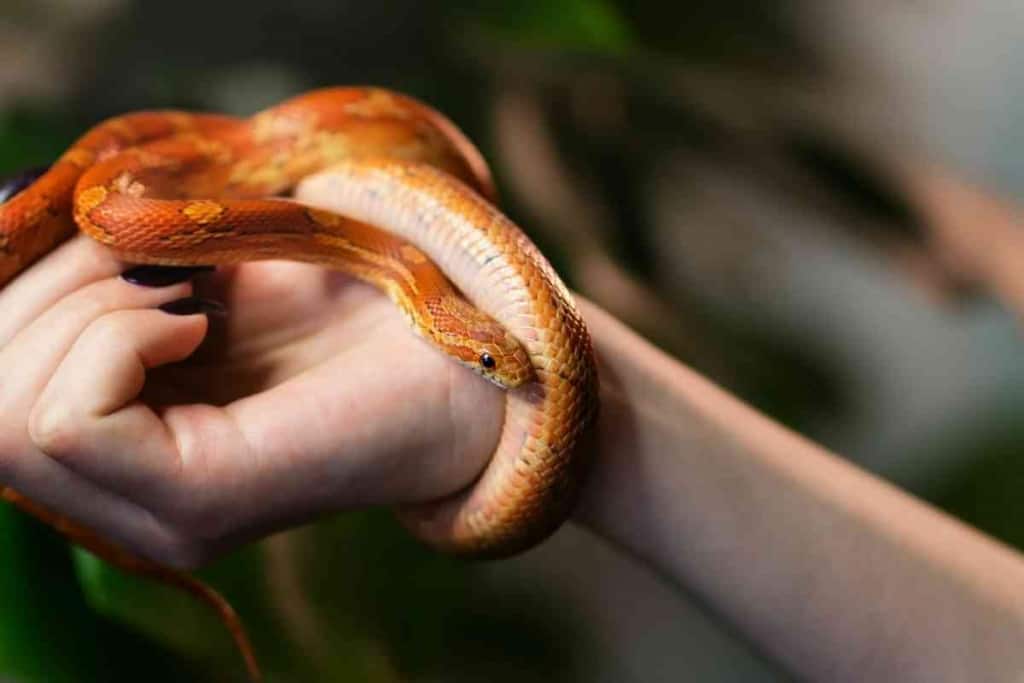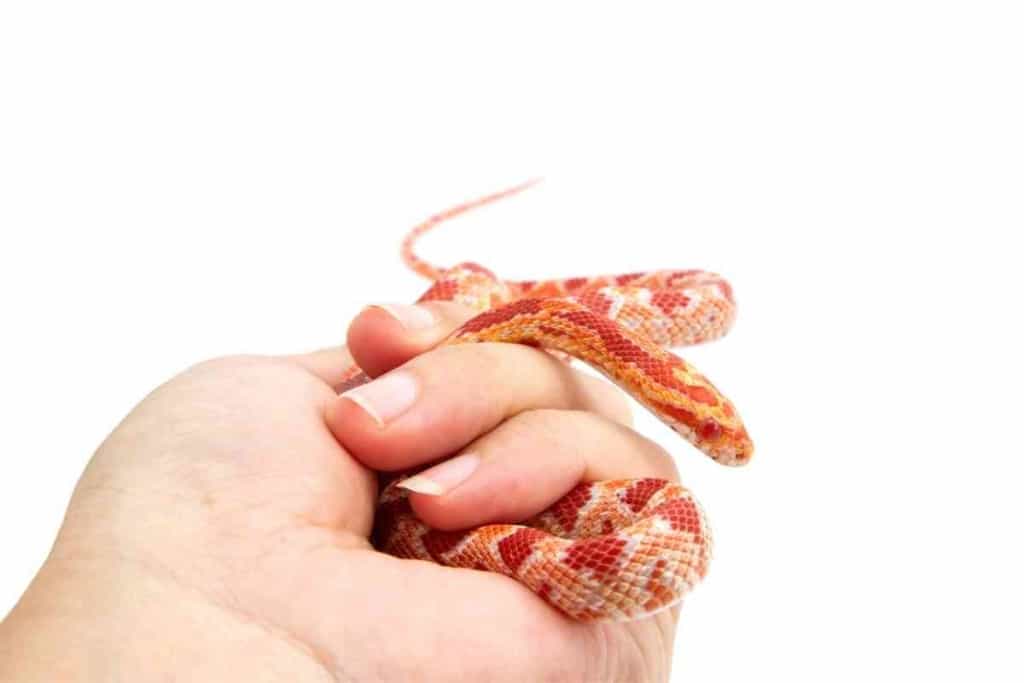How Often Should I Handle My Corn Snake To Keep Them Friendly?
Corn snakes are great pets since they are very patient and tough reptiles. Even so, you should know how often you should handle your corn snake. The great thing about snakes is that you create a bond with them when you are handling them. However, you should educate yourself on how frequently and for how long you should handle the snake.

How often should I hold my corn snake?
Typically, you should handle your corn snake about once a week. When they first arrive at your home, you should not touch them for about two weeks or until they start eating properly. Plus, there are also several instances when you should not touch your snake at all.
I can help you understand how to make a corn snake familiar with your presence, how frequently you should handle the corn snake, how to hold it, and when not to hold the snake.
As a snake owner myself, I have a large variety of snakes that exhibit different behaviors and moods. If you own a corn snake, I can help you understand how often it is sufficient to handle it.
How to Make a Corn Snake Become Familiar With You
When you bring your corn snake home for the first time, it is not a good idea to start handling it immediately. Snakes are sensitive to their location and if you start handling them too early, it can make them stressed out.
It is important to give them time to adjust to their new home. This is particularly important if the snake has traveled in a car or a plane to come to your home.
I recommend you should leave your snake for about three to five days. Then you should give it a small meal and then wait another week before you handle your snake.
Make sure to check if the snake has eaten its food before you try to hold it or do some clean-up or maintenance of the tank.
Take it slow when starting to build your relationship with the snake. Your initial handling session should last no longer than five minutes. Make sure you do not return your snake to the tank before it is calm. This will condition your snake on how to behave when you are handling it.
Once you are able to successfully hold your snake for five minutes, you can work up to 10 minutes and then longer from there.
How Frequently Should You Handle Your Corn Snake
How often should I handle my corn snake is one of the most common questions that snake owners ask.
The general rule of thumb is that you can take out and hold your snake about once a week. Depending on the mood and behavior of the snake, it may also be okay for you to take it out a second time a week. However, make sure you don’t handle it too much or handle it twice in one day since it can stress out the snake.
You may not be able to see that your reptile is stressed from its face, but it will manifest in other forms like refusal to eat, ill health, and other negative symptoms.
Having said that, you also need to handle your corn snake on a regular basis in order to clean and maintain its tank. This means that it is OK to sometimes handle your snake for a very short period of time, more than once a week, so that you can clean its surroundings.
In the same way, there are times when you should know to leave your snake alone, even if it means you go more than a week without handling your snake. You need to educate yourself on snake behaviors and apply some common sense in this case.
For example, you took out your snake on a Friday.
However, when you come home from school or work on Monday, you see that the snake has defecated and messed up its tanks. In this case, it is completely fine to handle the corn snake so that you can do some quick cleaning.

Unlike other animals, snakes do not require any human or social interaction for their mental health. However, handling them at the right frequency can help them remain tame and allow them to exercise.
How to Hold Your Snake
Don’t just put your hand in the tank and scoop out the snake before giving it any warning. Make sure your snake is awake by tapping it with a soft material like tissue paper or stroking its body with a stick or snake hook.
This will help it understand that it is time to be held. Once it starts to flick its tongue, you will know it is awake. If you are concerned about getting bitten, it is a good idea to put on some light gloves.
Always approach the snake from the side. Approaching the snake from above may make it defensive since it might make them feel a predator is attacking them. When picking it up, make sure you hold as much as you can of its body and do not restrain its head or tail.
Once you have securely pulled the snake out of its tank, make sure to hold it close to your body and guide its movements with your hands and arms.
You can also drape the snake around your shoulders or allow it to climb up your face. However, if that makes you uncomfortable, don’t panic; just gently guide the snake’s face away from your head using your arm.
How and When Not To Handle Your Snake
There are many instances when you should avoid handling your corn snake.
● Do not try to hold your corn snake after it has eaten. Give your snake about 48 hours to digest its meals before handling it. If you pick it up too soon, it may be forced to regurgitate its meal.
● Do not handle a corn snake when it has a blue sheen on its scales. This is a sign that the snake is about to shed its skin or is already shedding its snake. It is important to leave it alone at that time.
● Do not hold the snake by its tail and allow it to dangle. They can injure their spine if they twist when hanging from their tail. Make sure the snake is well supported from the middle of its body.
● Do not pick the corn snake by its head either.
● Do not bring your corn snakes around people who are afraid of snakes. If you want them to make friends with the person, you should start by allowing them to see the snake from a distance. Once they are comfortable with the snake, you can request them if they would like to handle the snake.
● Do not allow small children to handle the snake. Children often drop snakes which can injure them.
● Do not bring your hand near the snake’s mouth when trying to pick up the snake. The corn snake may believe you are bringing it food and bite you.
● Always wash your hands before touching the snake to prevent the transfer of bacteria or pathogens to the snake. Wash your hands afterward as well to prevent the transfer of bacteria from the snake to you.
